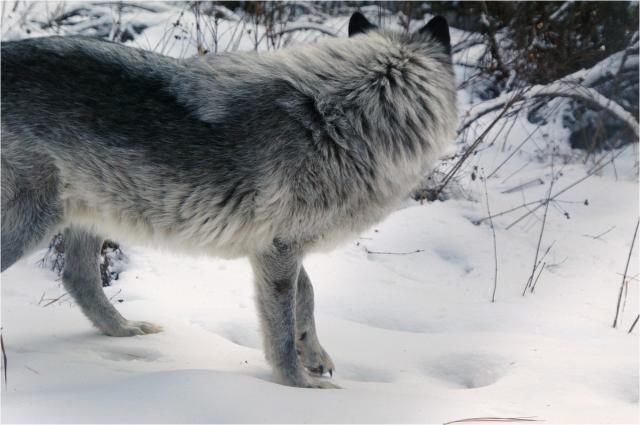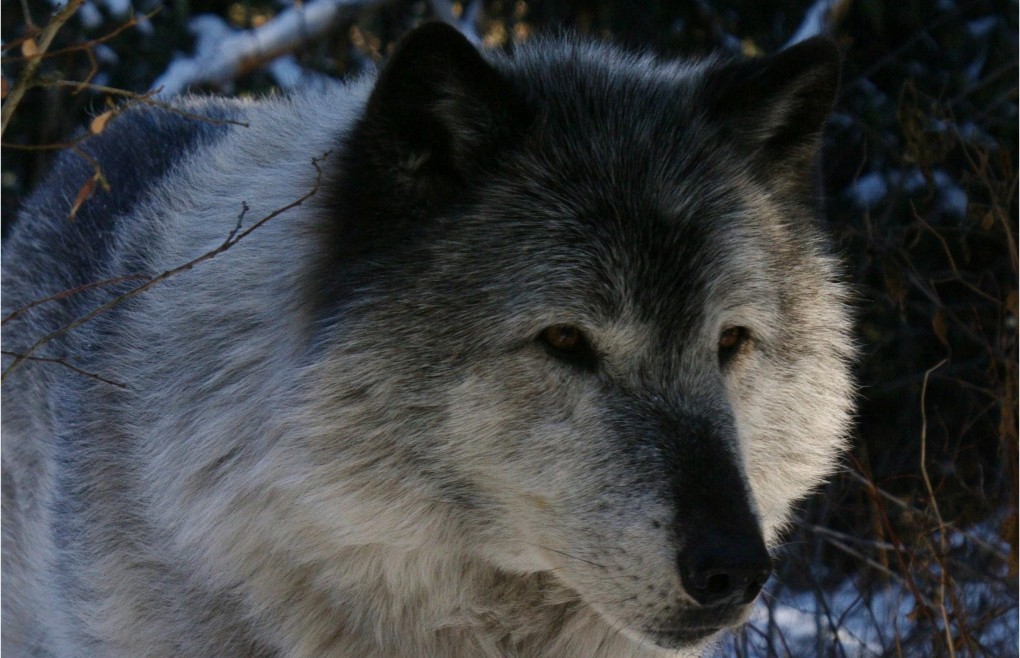
Here’s Piyip again from the WERC. I’ve got lots of photos of him as he was such a friendly boy to me during my stay there (even giving me a bit of a photo shoot one day). This picture was taken in early December and gives people an idea as to just how thick a wolf’s pelt, or coat, is during the winter. Piyip is probably older than any wolf surviving in the wild, and most of us know from our own dogs that their coats change as they grow older; losing luster and shine. However, Piyip’s coat, or should I say mane, is still pretty impressive. If he were to let me put a ruler perpendicular to the skin on his neck, his fur would probably measure out 5 inches. I guess you need a coat like that for those sub zero days and nights.
A wolf’s winter pelt is a valuable commodity to some people. The Nez Perce (whose reservation is located in central Idaho) use winter pelts for cultural ceremonies. To them, the pelt is the only reason to hunt a wolf. For many non-native Idahoans there is no perceived value in having wolves. The death of a wolf is what is valued. At the local gas station in Winchester, Id., there was a photo of a wolf that a man had killed. It was posted on the wall along side many other photos of trophy wildlife killed in the area, such as elk, cougar, ect.. The photo of the wolf caused all sorts of public outcry. One of the main complaints was why did this man claim the wolf? In other words, he should have tossed the carcass over a cliff and tried to kill another with his existing hunting tag. Or, just ‘shoot, shovel and shut-up’.
The value placed on wolves differs greatly among groups of people. These values have much to do with the ways in which cultures are constructed, and thus, cultural constructs; ‘how does this animal benefit our way of life’. How can/does the wolf benefit people that see it as a varmint and threat? I’d love to know. Any thoughts
